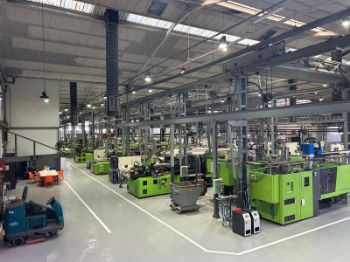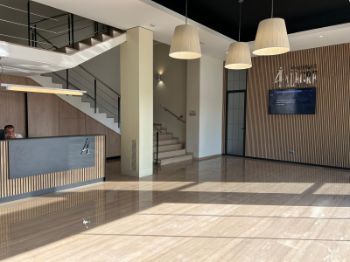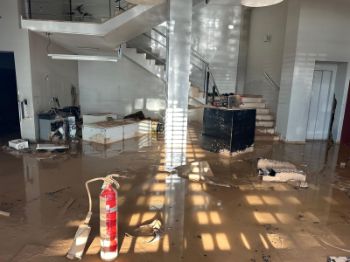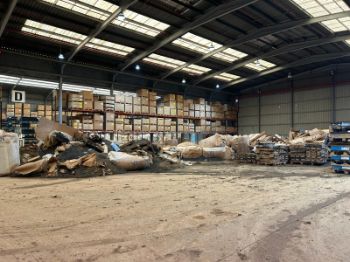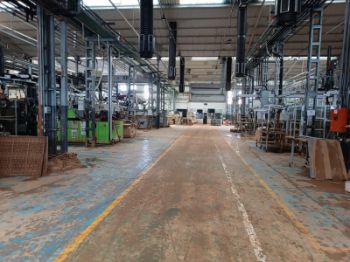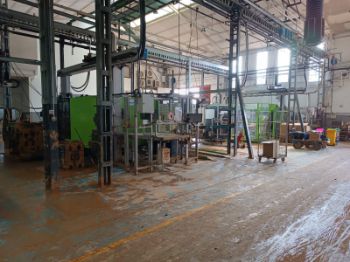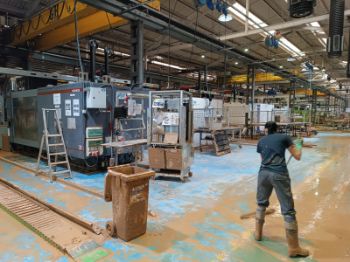Rebuilding to come back better: chronicle of a decisive year
It is September 2025 and our plant in Almussafes (Valencia) is in full production after the catastrophic flood of October 2024. We have rebuilt this plastic injection molding factory, a benchmark in the automotive industry, in record time. We have gone from mud to efficiency in less than a year and have been reborn with new equipment, improved facilities, and optimized processes. And all this has been possible thanks to a committed team that has set an amazing example of industrial resilience and commitment to customers. A team that allows us to say that today we are better prepared for the future.
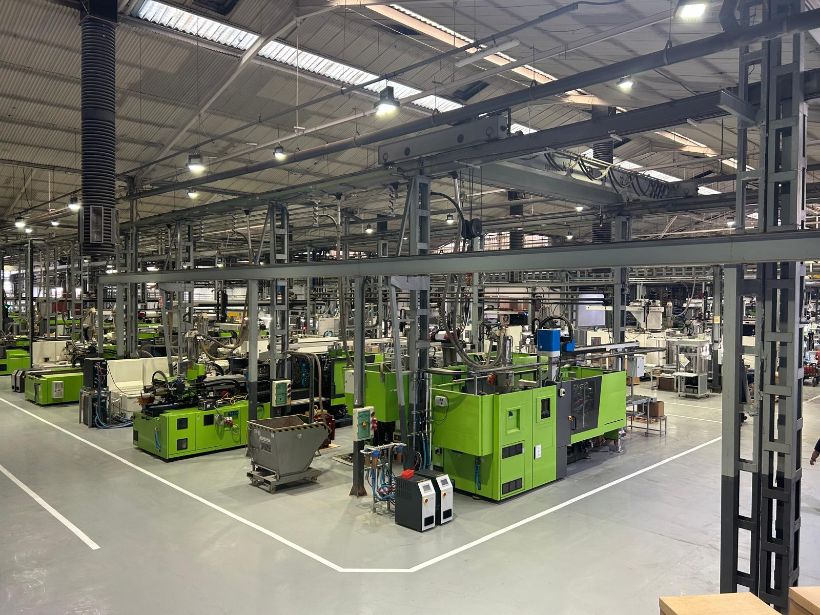
For many workers at Industrias Alegre, seeing the machines once again setting the daily pace at the plant is nothing short of miraculous. The extent of the destruction caused by last October's flood was immense.
The company was devastated at the end of October and began producing again in June. Now, after several months of testing and improvements, this place that water and mud left unrecognizable is returning to normal. But improved: with more light and order. By the end of the year, the company will have recovered 100% of its production capacity.
A landscape that was hard to recognize
Those who crossed the factory gates on October 31st were met with an apocalyptic scene: vehicles piled up and displaced by the current occupied the surrounding area, and some had entered the warehouse. Inside, there were hanging lamps, pallets, boxes, and scattered parts... and mud, a thick layer of mud covering everything: the floor, the injection machines, the furniture, the tools, the screens, the precision instruments... And a thick silence. Enrique Careaga, our CEO, sums up the first visual impact of the place in a few words: "It was like not recognizing your own home."
But that scene could only be seen two days after the disaster, when authorities allowed access to the area. Before that, throughout the night of the 29th, the concern had been for the safety of those who were trapped. Thirty people were working in the factory when the water began to pour in, and they took refuge in the second-floor dining room, spending the night in the dark, lighting their way with their cell phones, sharing the food from the vending machines, and waiting to be evacuated.
Removing 8,400 tons of mud and discovering rituals of resilience
Once the trapped workers were safe, the company set up a crisis team that met at 3 p.m. on the same day, October 30. The meeting was held via videoconference because it was impossible to access the plant. From that moment on, tasks were assigned to begin reconstruction, starting with the most basic: removing the mud, clearing passageways, rescuing molds, and regaining control of the facility. It was also necessary to immediately find a generator to provide power and move overhead cranes: it was urgent to begin extracting molds from the equipment trapped in the mud.
Our technicians estimate that a total of 8,400 tons of mud were removed. And everyone involved—from engineering and operations to management and middle management—worked shoulder to shoulder regardless of their position. As Llanos Micó, head of Human Resources, recalls, "when you remove mud, we all know the same thing: that we have to clean up." During those days, a spirit of blurred hierarchies, joined hands, and a contagious determination to move forward emerged.
It wasn't just the staff. Family and friends joined in the work. And well-organized volunteers who came every Saturday for many weeks to lend a hand. The crews removed debris, cleaned out tanks, and sorted through the few items that seemed salvageable. "You would clean up one area, and the next day it would be brown again. It was as if the mud was sprouting from the ground," recalls Toni Martínez, one of our production managers, who is still amazed by the collective tenacity of those days.
Internal communication was essential to maintaining momentum. With the systems down, Llanos Micó and his team improvised daily WhatsApp messages linking the leadership team with existing information groups within the company. This made it possible to report on progress, shifts, and needs. For three months, every night, Micó prepared a detailed summary that helped keep morale high. Small gestures—such as group photos from the crane or applause after each milestone—became rituals of resilience.
Maintaining production even when away from home
Two key decisions were made on the first day. The first was that the company's owners decided to commit to rebuilding. Without hesitation. And the second was that the fundamental objective from that moment on was to guarantee supply to customers.
This meant activating an outsourced production network while the plant was able to return to production. Molds were recovered and repaired against the clock and sent to companies in Jaén, Zaragoza, the Ibi-Onil axis, and even Portugal and Germany. Naturally, molds also arrived at our plant in Poland. To ensure success, we sent personnel—from tooling, maintenance, and engineering—to the collaborating facilities, and thanks to this coordinated effort, customers had regained their normal supply rhythm by December. Just one month after the flood.
More than 60 people from our company joined the external manufacturing process, learning other ways of working and, at the same time, validating the value of our own team. We spent more than six months producing outside our plant. Until June, when it was time to return.
Rebuilding the plant: from shock to redesign
While production was shut down, the plant consolidated its new direction. "We took advantage of the opportunity to rebuild and become more efficient," summarizes Careaga, our CEO. And that has been a huge challenge. In fact, both the top management and the maintenance team agree without hesitation that it has been much more complicated than starting from scratch.
In six months, the company reorganized layouts and flows. It also undertook investments that could not be implemented before, with the factory up and running, such as adding two new loading docks.
Throughout the process, the logic that has guided all decisions is to rebuild in order to improve. As a result, we now have a factory that is better designed for the actual flow of operations, with better access, clearer zoning, and shorter routes for materials and people.
Machinery and equipment: repair, refurbish, recalibrate
The DANA affected the building that houses production and significantly damaged the injection machines. But it also destroyed all the equipment and tools, from screwdrivers to transformers, compressors, floors, and furniture.
Repair? Replace? The priority was clear: find the quickest solution that would allow us to return to production as soon as possible. And that generally meant a combination of rapid purchasing, internal engineering, and supplier support. For the injection machinery, which had been rendered unusable, we decided to order new, custom-made equipment. And, in order to get it to the factory more quickly, our staff were able to recover some basic components (no more than 20% of them). It was an imaginative way to speed up the process.
Resuming production at home was a milestone that was achieved in June. However, at that point, a second enormous technical challenge arose: adjusting production. This is because the molds and machines require a period of adjustment, and the processes must be stabilized gradually to ensure zero defects in each piece. Although our machines are new, our customers are the same, and their quality standards are as high as ever.
People: the force that enables the return
But throughout this process of catastrophe and reconstruction, the most important thing has been the human dimension. Because this crisis had an enormous impact on the entire region: many colleagues who live there lost their cars and homes. And yet, "they came to save their company before fixing their own problems," recalls Careaga, who, from the general management, emphasizes that this energy was decisive. "We can only express our gratitude to the people at the company. They fought to keep their jobs, and with that spirit, they also secured the jobs of others."
Between November and May, the company took advantage of the ERTE DANA program to maintain employment during the most critical phase. On June 1, the entire workforce returned to work. Some returned to production, while others took on recovery tasks.
Throughout this time, the Human Resources team has played a pivotal role between the operational and emotional aspects. It had to manage documentation, special shifts, and temporary hires and resignations. But above all, it had to provide support. "We have managed to get everyone rowing in the same direction, with a common goal. That is something to be very proud of," says its manager, Llanos Micó. "Today we feel a certain fatigue, but also a deep satisfaction with what we have achieved and a much stronger sense of belonging."
The response from the ecosystem, especially from customers, led by Ford, was also decisive. They offered technical, human, and operational support from the very beginning. There were extra hands to clean, move equipment, and speed up each process.
Customers, partners for looking to the future
Almost a year after the flood, we have practically the entire factory up and running again. With new machinery and molds, new loading docks, more rational layouts, and a reinforced commitment to improvement. We still need to fully stabilize day-to-day operations, but the course has been set. "We turned the calamity into an opportunity to become more efficient," says the CEO. The phrase is not a slogan; it is a plan in action.
And now, with the perspective that time has given us, we can see that the most valuable asset our company has is its team. A group of people who are now more united and feel more capable and courageous than they ever imagined.
We are back. And we are back better than ever. Because that catastrophic night and the endless mud gave rise to one certainty: that the company and the people who make it up are ready for whatever comes next. And that, despite everything we have been through, our spirit is unequivocally optimistic.
